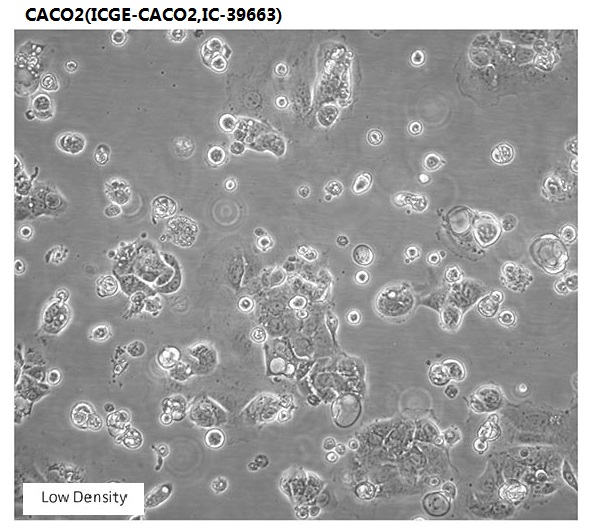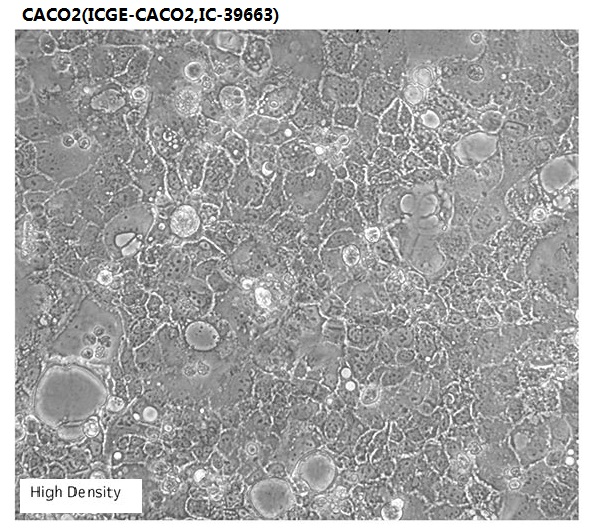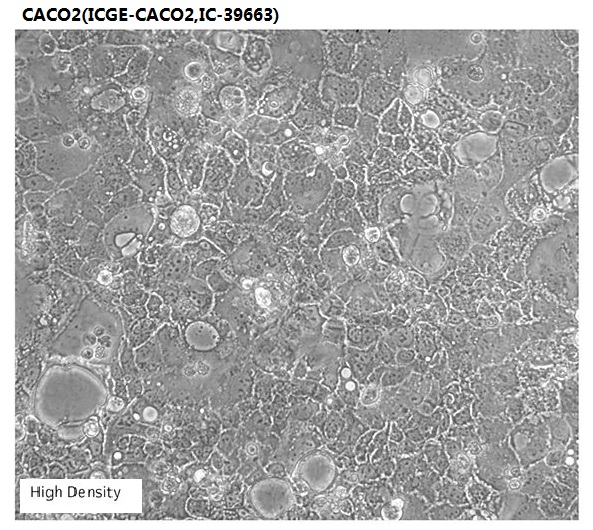


Overview
| Permits and Restrictions | |
|---|---|
| Organism | Homo sapiens, human |
| Tissue | Colon |
| Cell Type | Epithelial cells |
| Product Format | frozen |
| Morphology | Epithelial-like |
| Culture Properties | Adherent |
| Biosafety Level |
1
Biosafety classification is based on U.S. Public Health Service Guidelines, it is the responsibility of the customer to ensure that their facilities comply with biosafety regulations for their own country. |
| Disease | Colorectal adenocarcinoma |
| Age | 72 years |
| Gender | Male |
| Ethnicity | Caucasian |
| Applications |
This cell line is a suitable transfection host.
|
| Storage Conditions | Liquid nitrogen vapor phase |
Properties
| Karyotype | The stemline modal chromosome number is 96, occurring at 16% with polyploidy at 3.2%. Ten common markers were detected i.e., t(1q;?), 10q-, t(11q17q) and 7 others. The t(1q17q) and M11 were found in a portion of cells. The ins(2), 10q-, and t(15q;?) were generally paired, and t(11q;17q) and t(21q;?) were mostly three-copied. Normal N9 was absent, and N21 was lost in some cells. One to 4 small acrocentric chromosomes were detected. No Y chromosome with bright distal q-band was detected by Q-observation. |
|---|---|
|
|
|
| Clinical Data |
72 years adult
Caucasian
male
|
| Receptor Expression |
This cell line expressed heat stable enterotoxin (Sta, E. coli) and epidermal growth factor (EGF). |
| Genes Expressed |
keratin,retinoic acid binding protein 1,retinol binding protein 2
|
| Cellular Products |
keratin
retinoic acid binding protein 1
retinol binding protein 2
|
| Tumorigenic | Yes |
| Effects |
Yes, in nude mice; forms moderately well differentiated adenocarcinoma consistent with colonic primary (grade II)
|
| Virus Susceptibility |
Human immunodeficiency virus 1 , Human immunodeficiency virus 1 |
| Comments |
Background
| Complete Growth Medium |
The base medium for this cell line is ATCC-formulated Eagle''''''''s Minimum Essential Medium, Catalog No. 30-2003. To make the complete growth medium, add the following components to the base medium: fetal bovine serum to a final concentration of 20%. |
|---|---|
| Subculturing |
Volumes are given for a 75 cm2 flask. Increase or decrease the amount of dissociation medium needed proportionally for culture vessels of other sizes. Corning® T-75 flasks (catalog #430641) are recommended for subculturing this product.
Subcultivation Ratio: A subcultivation ratio of 1:4 to 1:6 is recommended
Medium Renewal: 1 to 2 times per week
|
| Cryopreservation |
Freeze medium: Complete growth medium, 95%; DMSO, 5%
Storage temperature: liquid nitrogen vapor temperature
|
| Culture Conditions |
Atmosphere: air, 95%; carbon dioxide (CO2), 5%
Temperature: 37��C
|


